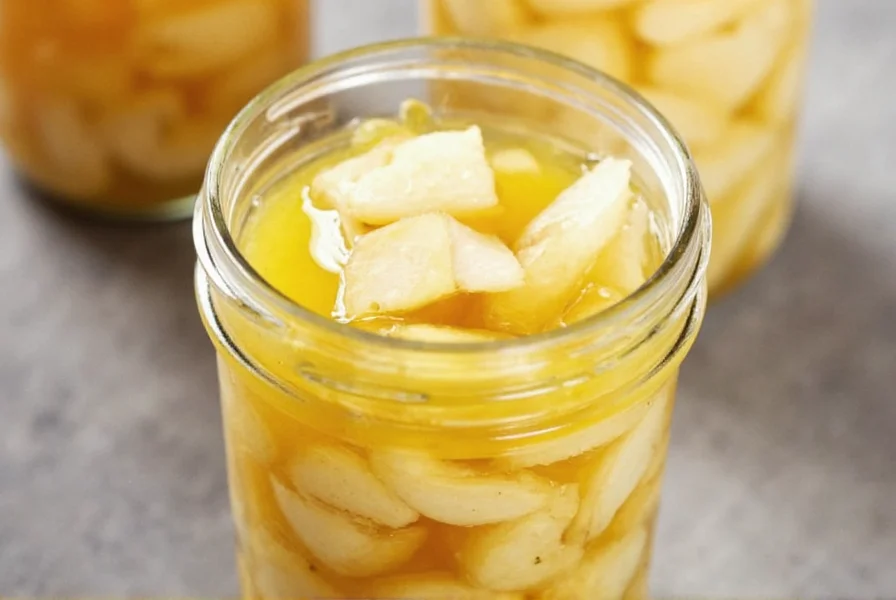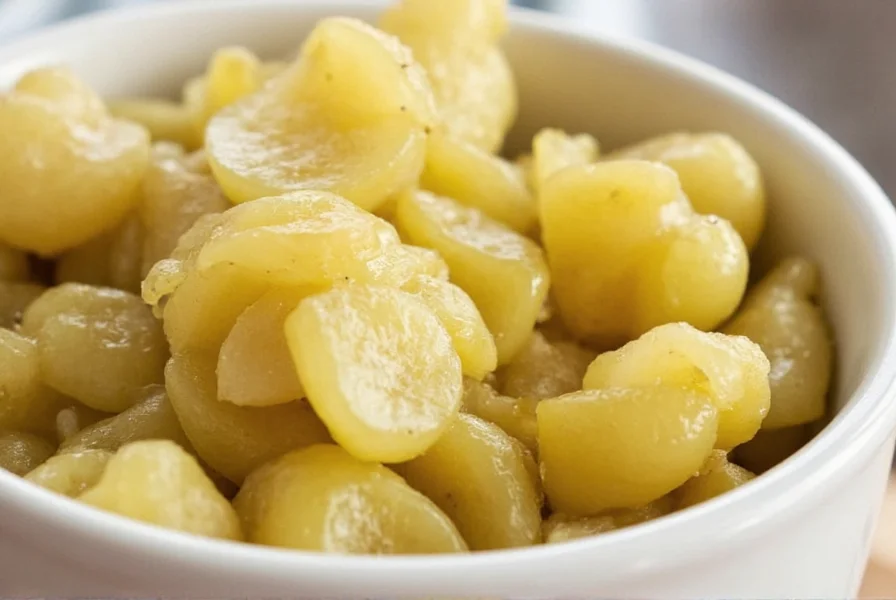Yes, you can make authentic pickled ginger (gari) at home in just 20 minutes with only 5 simple ingredients: fresh ginger, rice vinegar, sugar, salt, and water. The key to perfect texture is using young ginger with thin skin, and the secret to that beautiful pink hue is the natural reaction between fresh ginger and vinegar. This easy homemade pickled ginger recipe yields crisp, flavorful results that surpass store-bought versions every time.
Making pickled ginger at home is simpler than you might think, and the results are dramatically superior to commercial versions. Unlike mass-produced options that often contain preservatives and artificial colors, homemade gari offers vibrant flavor and that signature translucent pink color naturally. Whether you're a sushi enthusiast or just looking to add a flavorful condiment to your meals, this authentic Japanese pickled ginger recipe delivers restaurant-quality results with minimal effort.
What Makes This Pickled Ginger Recipe Special
Traditional Japanese gari serves as the perfect palate cleanser between different types of sushi. The delicate balance of sweet, tangy, and spicy notes enhances the dining experience without overpowering delicate fish flavors. Our tested recipe achieves the ideal texture—crisp yet tender—and develops that characteristic light pink color naturally through the pickling process, without any artificial dyes.
Essential Ingredients for Authentic Pickled Ginger
The beauty of this simple pickled ginger recipe lies in its minimal ingredient list. Each component plays a crucial role in achieving perfect results:
| Ingredient | Amount | Why It Matters |
|---|---|---|
| Young ginger (shin-shoga) | 8 oz (225g), peeled | Thin-skinned ginger provides ideal texture and natural pink hue |
| Rice vinegar | 1 cup (240ml) | Mild acidity preserves ginger while enhancing natural pink color |
| Granulated sugar | 1/2 cup (100g) | Creates perfect sweet-tangy balance without overpowering |
| Sea salt | 1 tsp | Enhances flavor and helps maintain crisp texture |
| Water | 1/4 cup (60ml) | Dilutes vinegar for optimal pickling solution |
Pro Tip: For the most vibrant pink color, use young spring ginger harvested between March and May. The natural enzymes in fresh ginger react with the vinegar to create that beautiful hue—no food coloring needed!
Step-by-Step Preparation Guide
Follow these precise steps for perfect pickled ginger every time. This quick pickled ginger method requires minimal equipment and delivers results in under 30 minutes.
Preparing the Ginger
Peel 8 ounces of young ginger using a spoon (this preserves more flesh than a peeler). Slice extremely thin (1/16 inch) using a sharp knife or mandoline. Thinner slices absorb the pickling liquid faster and create that desirable translucent appearance.

Creating the Pickling Solution
Combine 1 cup rice vinegar, 1/2 cup sugar, 1 teaspoon salt, and 1/4 cup water in a small saucepan. Heat over medium until sugar dissolves completely—do not boil. The ideal temperature is 160-170°F (70-75°C), which preserves ginger's crisp texture.
Pickling Process
- Place sliced ginger in a heatproof glass container
- Pour warm (not boiling) pickling solution over ginger
- Cover with parchment paper directly on surface of liquid
- Cool to room temperature (about 20 minutes)
- Seal container and refrigerate
For best results when making pickled ginger for sushi, let it rest in the refrigerator for at least 4 hours before serving. The flavor continues to develop over the first 24 hours, reaching perfect balance.
Storage and Shelf Life
Properly stored in an airtight container in the refrigerator, homemade pickled ginger maintains optimal quality for 3-4 weeks. The ginger will gradually soften over time but remains safe to eat for up to 6 weeks. For extended storage, freeze portions in ice cube trays then transfer to freezer bags—thaw in refrigerator before use.
Troubleshooting Common Issues
Problem: Ginger isn't turning pink
Solution: You likely used mature ginger. Young spring ginger naturally develops pink hues. If using off-season ginger, add a slice of fresh beet to the pickling liquid.
Problem: Ginger is too soft
Solution: The pickling solution was too hot when added. Always cool to 160-170°F before pouring over ginger.
Problem: Flavor is too vinegary
Solution: Increase sugar by 1-2 tablespoons next time. Taste the pickling solution before adding to ginger—it should have balanced sweet-tangy flavor.
Creative Uses Beyond Sushi
While traditional for sushi, homemade pickled ginger shines in many applications:
- Add to rice bowls for bright flavor contrast
- Chop finely for salad dressings
- Pair with grilled fish or chicken
- Use as garnish for Asian-inspired cocktails
- Add to stir-fries during final cooking minutes
Popular Variations to Try
Once you've mastered the basic easy homemade pickled ginger recipe, experiment with these delicious variations:
Sweet Asian-Style Variation
Add 1 star anise and 1 cinnamon stick to the pickling solution for a subtle aromatic complexity that complements richer dishes.
Spicy Ginger Pickles
Include 1-2 thin slices of fresh red chili pepper for a gentle heat that builds slowly after eating.
Citrus-Infused Pickled Ginger
Replace 1/4 cup of the water with fresh yuzu or lemon juice for a bright, citrusy note that pairs beautifully with seafood.
Why Homemade Beats Store-Bought Every Time
Commercial pickled ginger often contains preservatives like sodium benzoate and artificial colors to maintain appearance and extend shelf life. Your homemade version contains only natural ingredients, offers superior texture, and develops that authentic light pink color naturally through the chemical reaction between fresh ginger compounds and vinegar. Plus, you control the sweetness level to match your personal preference.
Frequently Asked Questions
Why isn't my homemade pickled ginger turning pink?
The pink color develops naturally when using young spring ginger (March-May harvest). Mature ginger won't develop this hue. If using off-season ginger, add a thin slice of raw beet to the pickling liquid—it will impart a natural pink color without affecting flavor.
How long does homemade pickled ginger last?
Properly stored in an airtight container in the refrigerator, homemade pickled ginger maintains optimal quality for 3-4 weeks. It remains safe to eat for up to 6 weeks, though texture gradually softens over time. For best flavor and texture, consume within the first month.
Can I use apple cider vinegar instead of rice vinegar?
While rice vinegar produces the most authentic flavor, you can substitute apple cider vinegar in a pinch. Use a 50/50 blend of apple cider vinegar and water to avoid overpowering acidity. Note that the flavor profile will differ slightly, and the pink color development may be less pronounced.
Why is my pickled ginger too soft?
Ginger becomes too soft when exposed to boiling liquid. The pickling solution should be warm (160-170°F / 70-75°C) but not boiling when poured over the ginger. Boiling temperatures break down ginger's cellular structure too quickly, resulting in mushy texture.
Can I make this recipe without sugar?
Sugar plays a crucial role in balancing the vinegar's acidity and creating authentic gari flavor. For reduced sugar, substitute with erythritol or monk fruit sweetener at 3/4 the amount. Completely omitting sugar results in an unbalanced, overly acidic product that doesn't resemble traditional pickled ginger.











 浙公网安备
33010002000092号
浙公网安备
33010002000092号 浙B2-20120091-4
浙B2-20120091-4